What decorative plaster to choose for the bathroom?
During renovations in the bathroom, the question often arises - what material to use for wall coverings that would withstand the characteristics of this room? The best solution is decorative plaster, varieties of which look good indoors and mask its shortcomings.
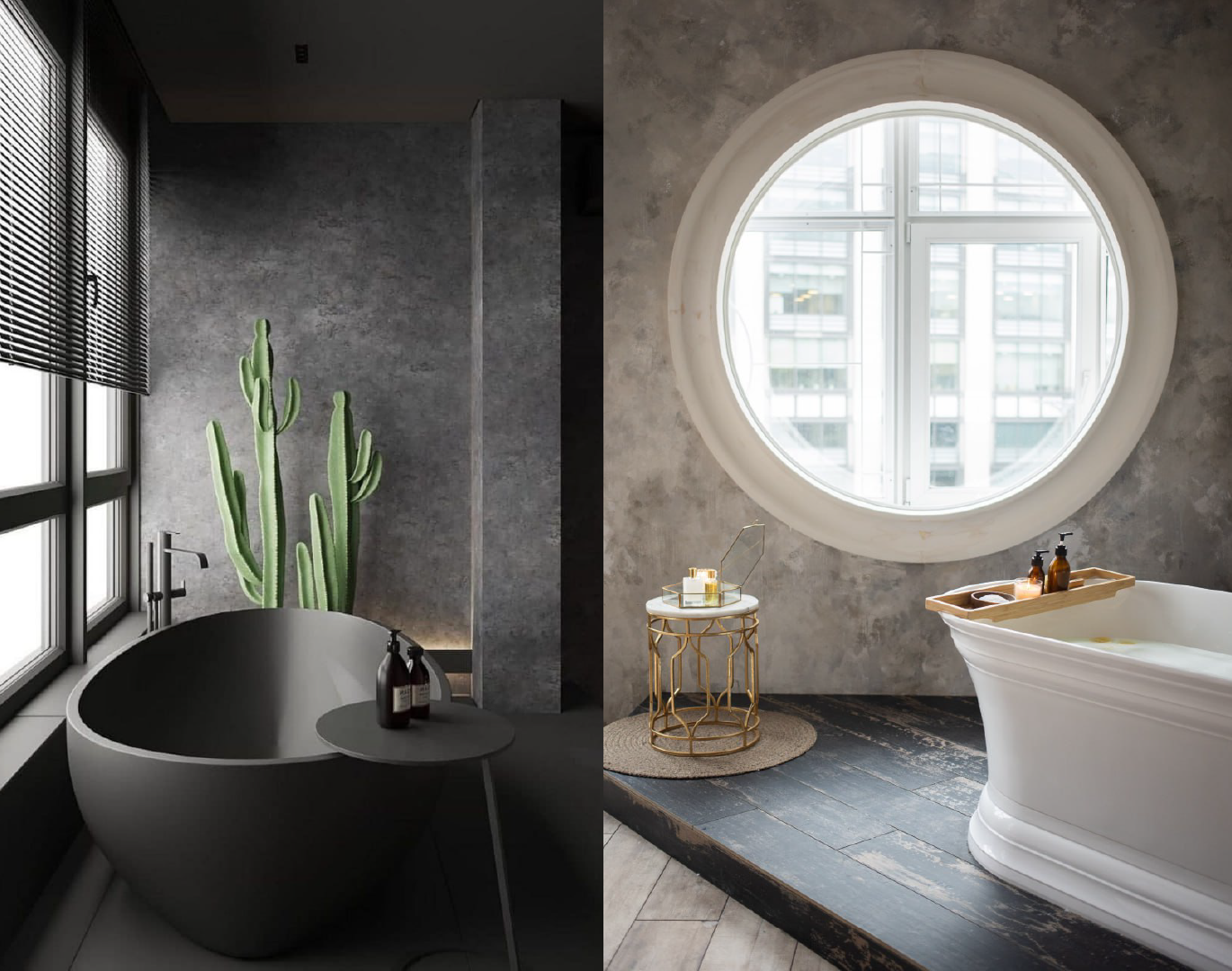
Advantages of decorative plaster in the bathroom
This type of finishing material, like plaster, is excellent for use in wet areas, as it has a number of undeniable advantages.
Among the advantages it is worth noting the following:
1. The composition contains special components that can withstand hot steam and resist contact with moisture.
2. Decorative coatings applied to the wall do not fade, do not lose their brightness and saturation.
3. An increased level of vapor permeability allows you to create a microclimate in the bathroom, avoiding condensation on the walls and fogging of the glass.
4. The coating is easy to care for, can be washed with basic detergents in case of contamination.
5. Lasts as long as possible with proper care, much longer than paint and about the same as traditional tile.
6. Plaster is an environmentally friendly coating that does not harm human health and does not emit toxic fumes.
Among the advantages of the material, it is worth noting a wide variety, since from various types of coatings you can choose options for decorating a bathroom in both classic and modern styles. It also has a wide range of colors and the ability to tint, which will make it possible to create an author's, unique design.
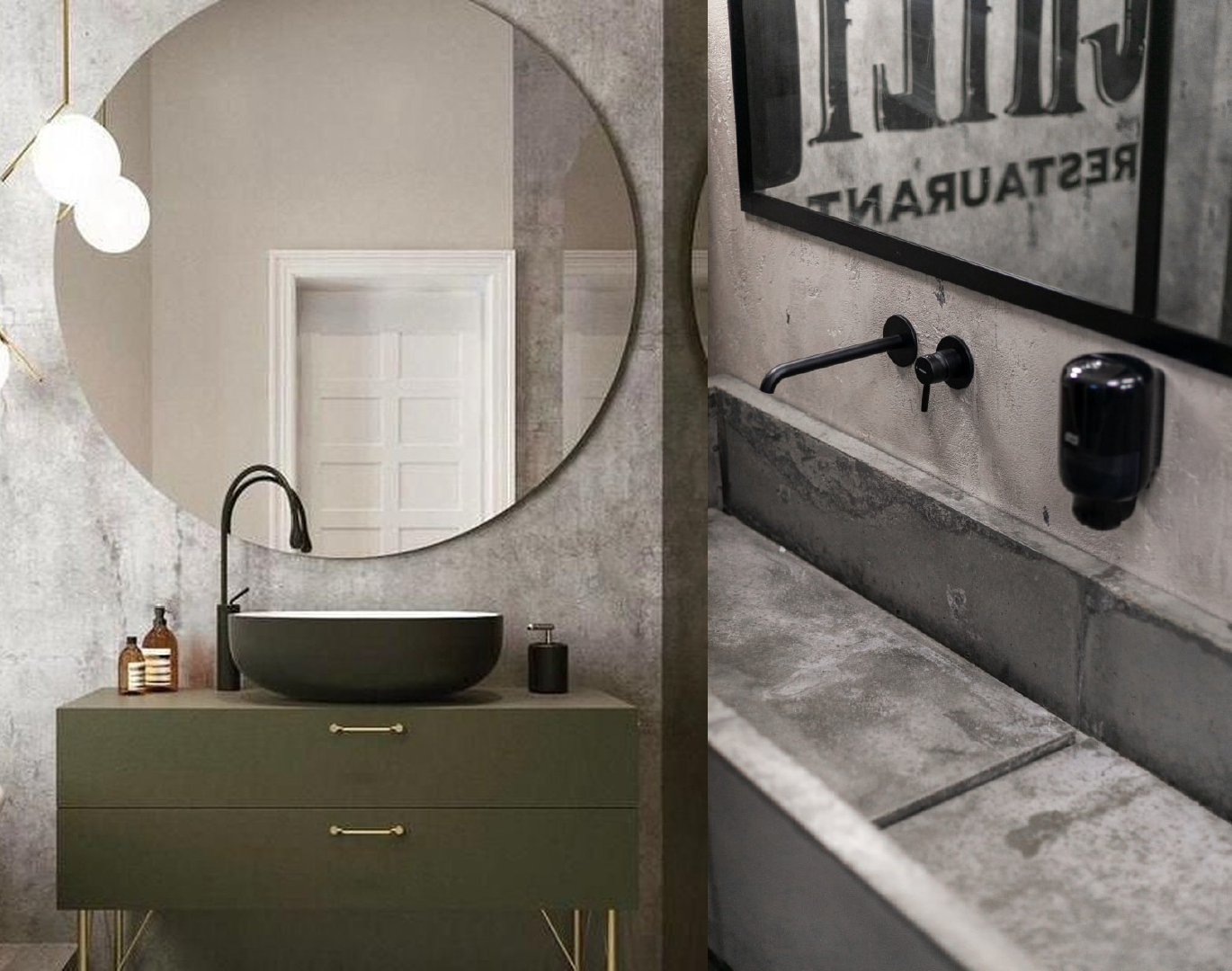
Which plaster is better for the bathroom: an overview of the types
Here you can buy decorative plaster for the bathroom, which has wide design possibilities and will suit the owners of any style of interior. We offer both imitations of stone, wet silk, as well as fabrics, metal and more.
Micro concrete, micro cement and quartz floors
Quartz coating, also known as Elfloor, is an option not only for the wall, but also for the floor. This moisture-resistant bathroom plaster is ideal for surfaces that often come into contact with water.
For example, for a wall that is located in close proximity next to an open-type shower cabin and not only. It allows moisture to not penetrate inside, which reduces the possibility of formation of defects. It has a smooth, even and monolithic surface, which is not afraid of external factors.
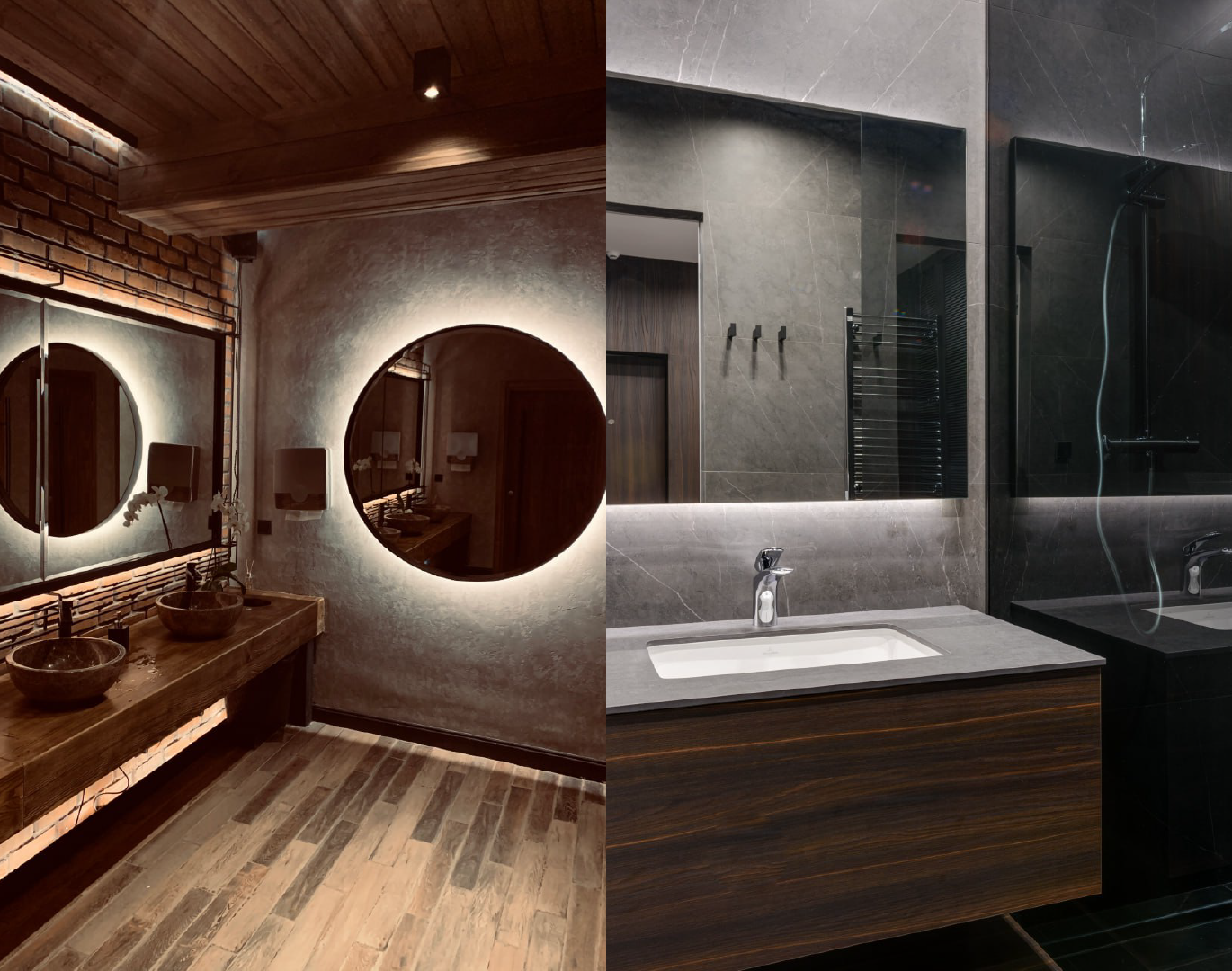
Rust and metal
Loft and industrial interiors need a coating that will emphasize their brutality and features. These include solutions that mimic metal streaks and rust structure.
They have a wide gallery of textures, where bronze, gold, silver, platinum and other coloring and application options are presented. They contain metal particles, have an original texture and shine.
Presented in two versions - Alchimia and Corrosia.
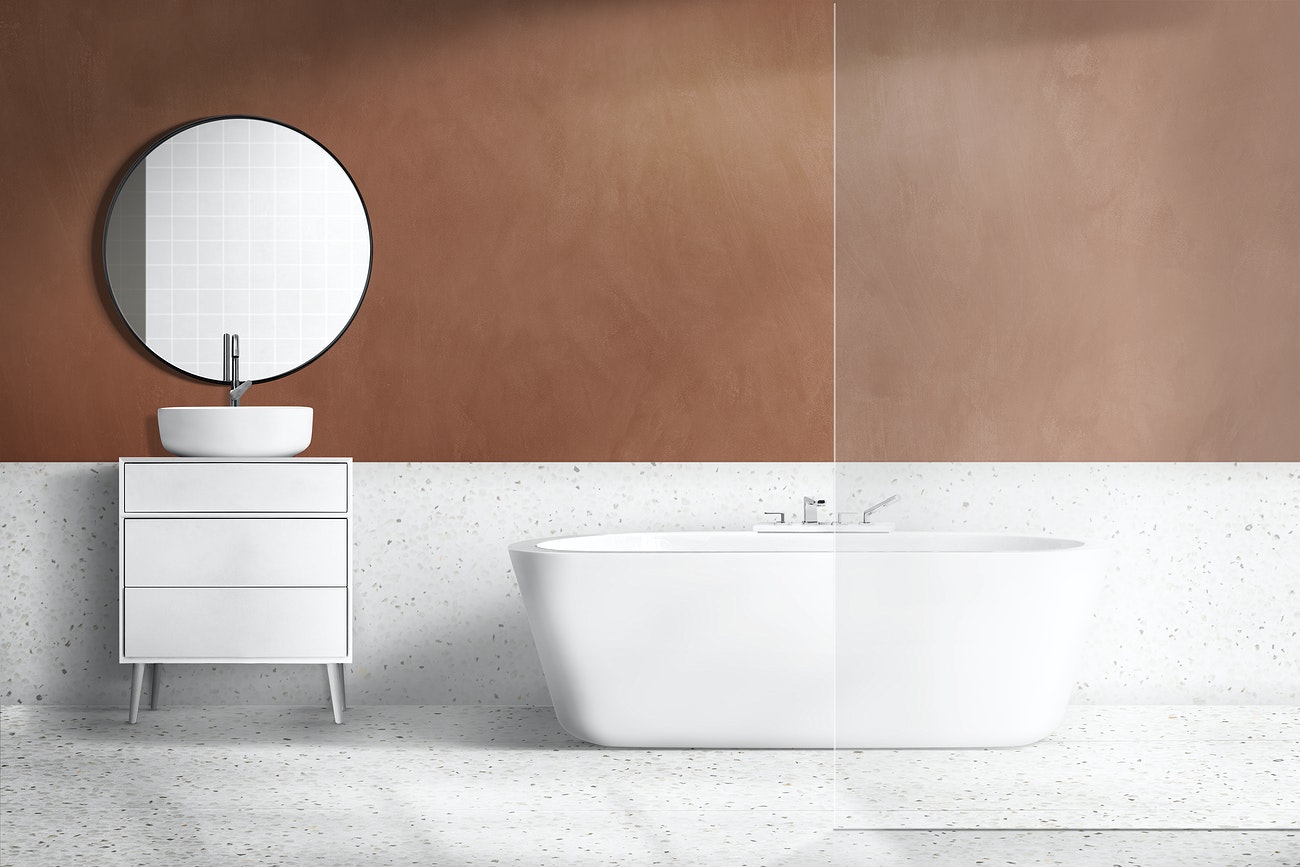
Silk and mother of pearl
The most popular option for modern interiors, because it allows you to imitate several types of coverage at once - from noble velvet and silk to a glossy sheen from mother-of-pearl.
Such options contain unique granules of different shapes and sizes, which give a silver, golden or other shine after application.
These include variants of Sahara, Persia, Illusion, Mirage, Feerie and others.
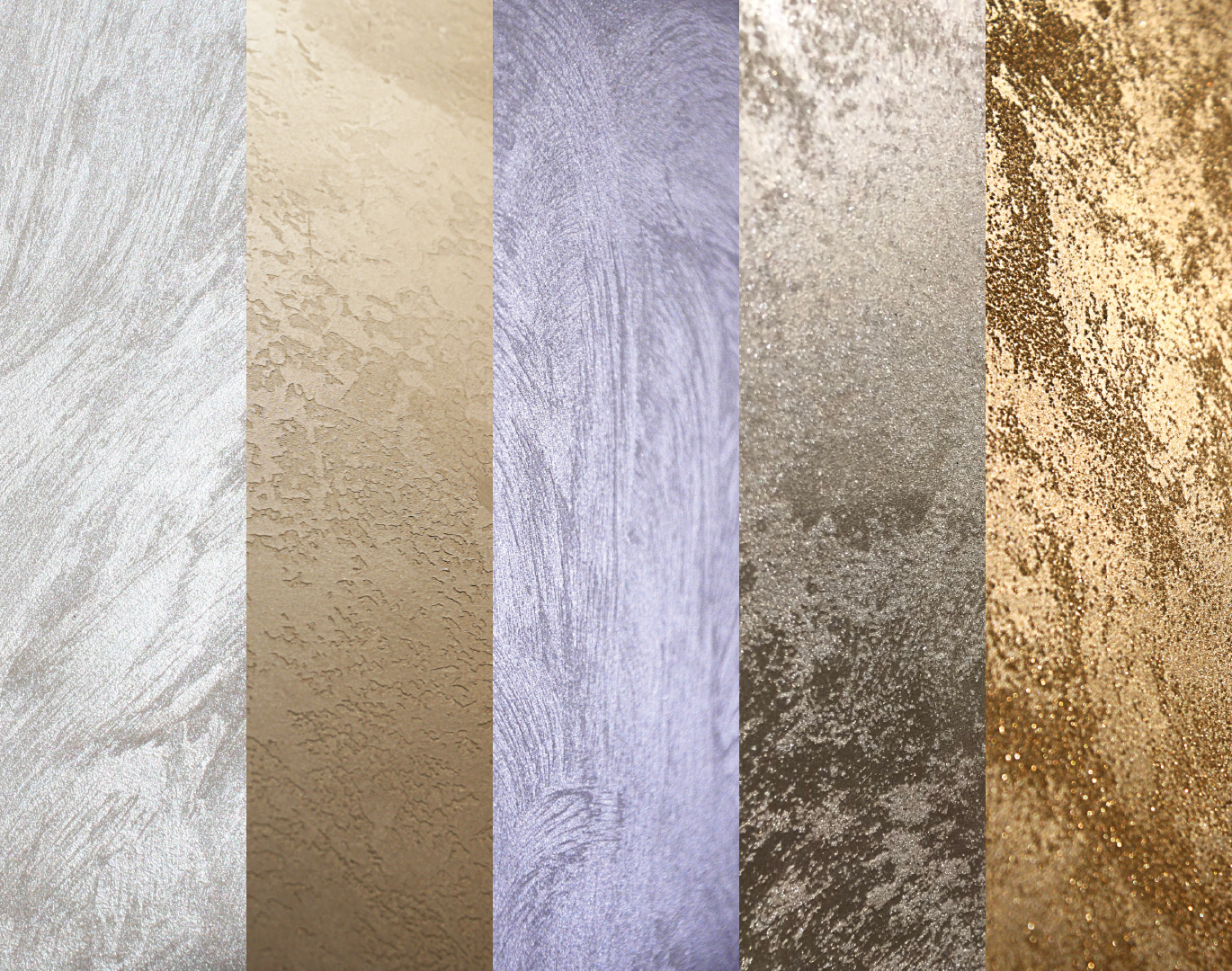
Marble
A distinctive feature of this material is the presence of marble, natural dust in the composition. As a result, after application, a strong, uniform surface is formed that imitates the waves and inclusions of natural rock. It has a light, glossy sheen, as well as a wide range of colors and textures.
It is used due to its moisture-repellent properties, has a special protective layer, thanks to which it withstands temperature changes and contact with hot steam. It can imitate almost all types of coatings, have a matte or glossy sheen.
Popular options include Marmorino Style, Murano, Stucco Art and Veneziano Style.
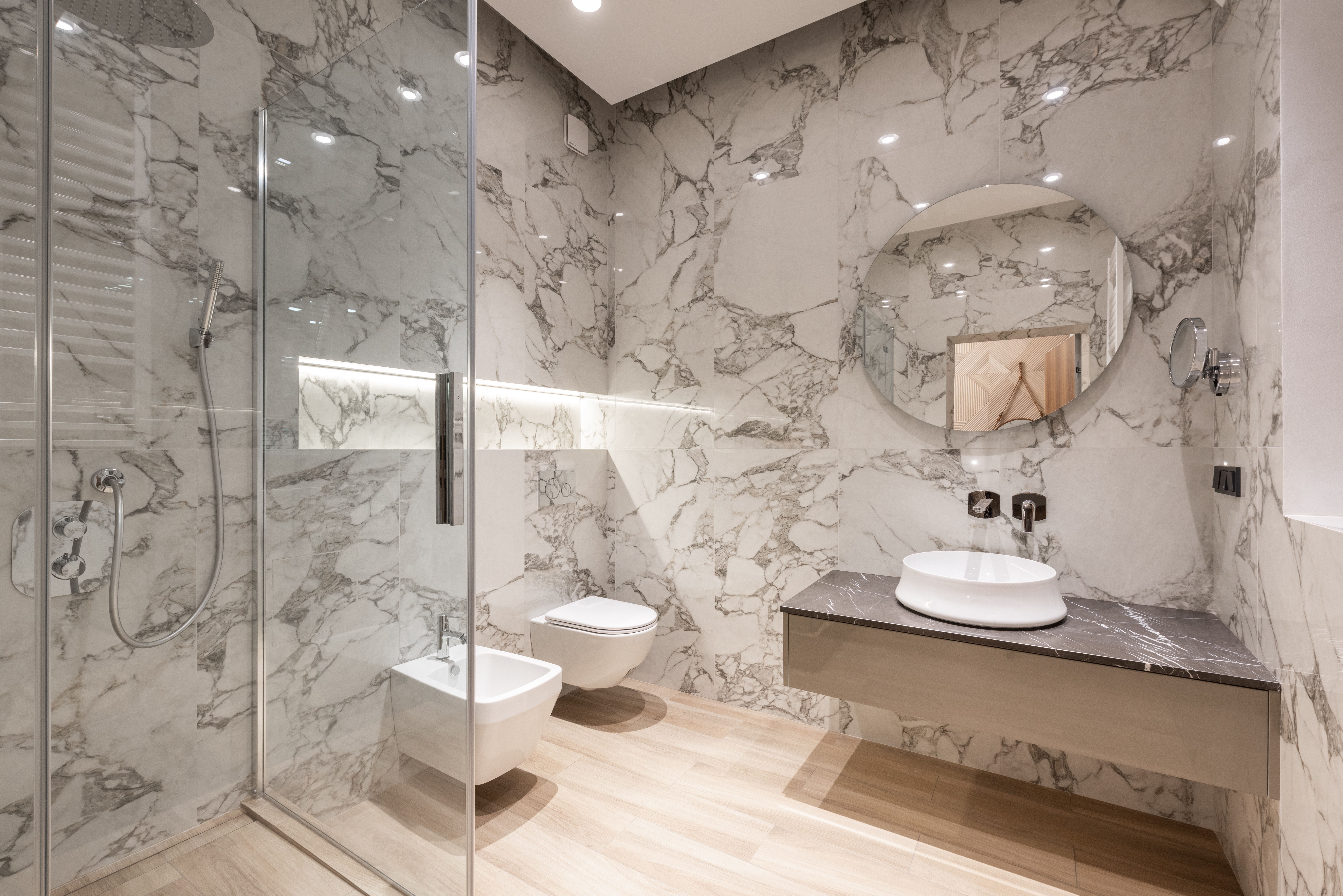
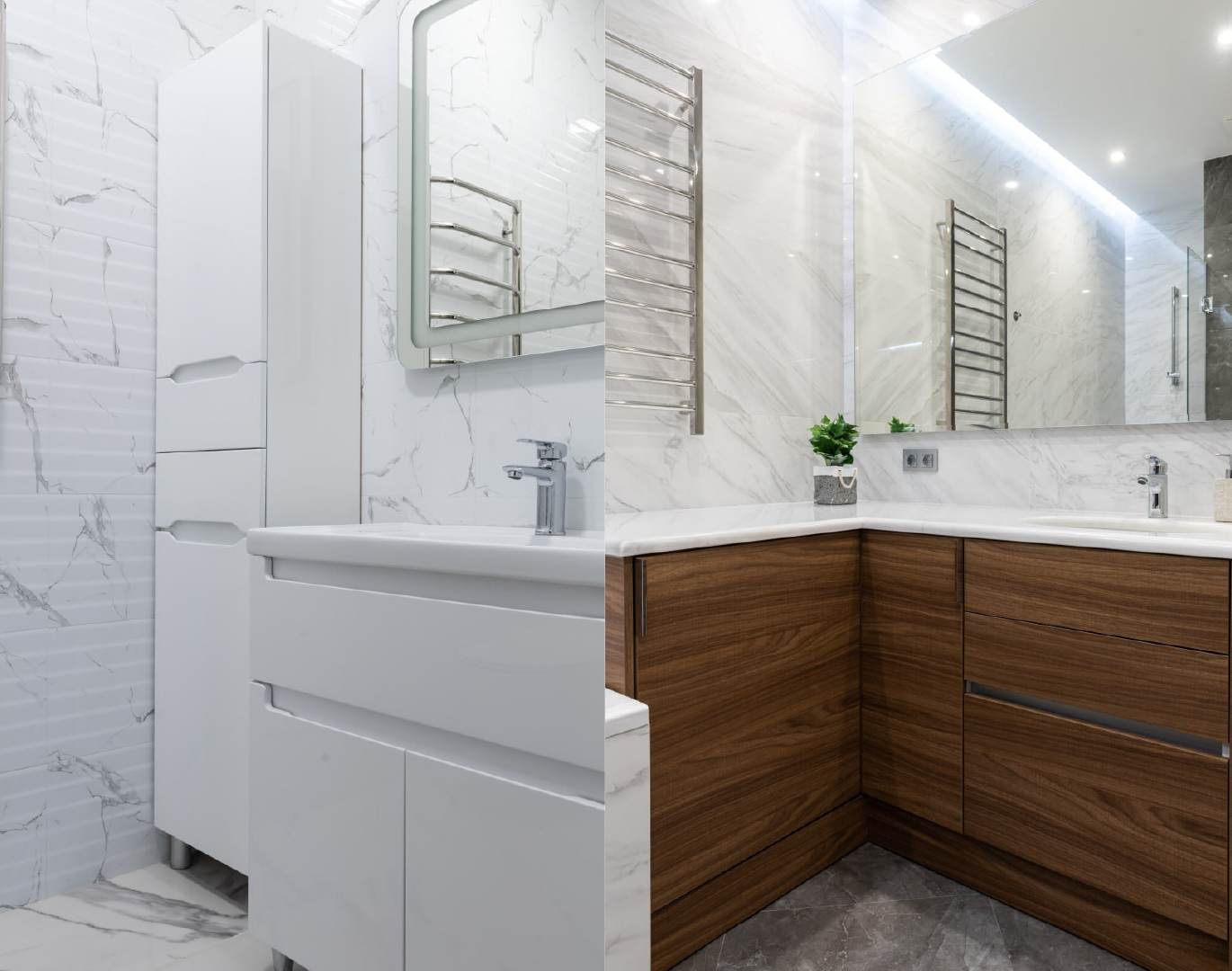
Concrete
Concrete coatings are characteristic of loft-style design, blend well with damp rooms due to their stability and the ability to be applied to any type of source material. They have a stone texture, porous, with paths, gaps or a matte effect that mimics an unpainted wall.
Note the coatings of Castello, Toscana and Travertino Style.
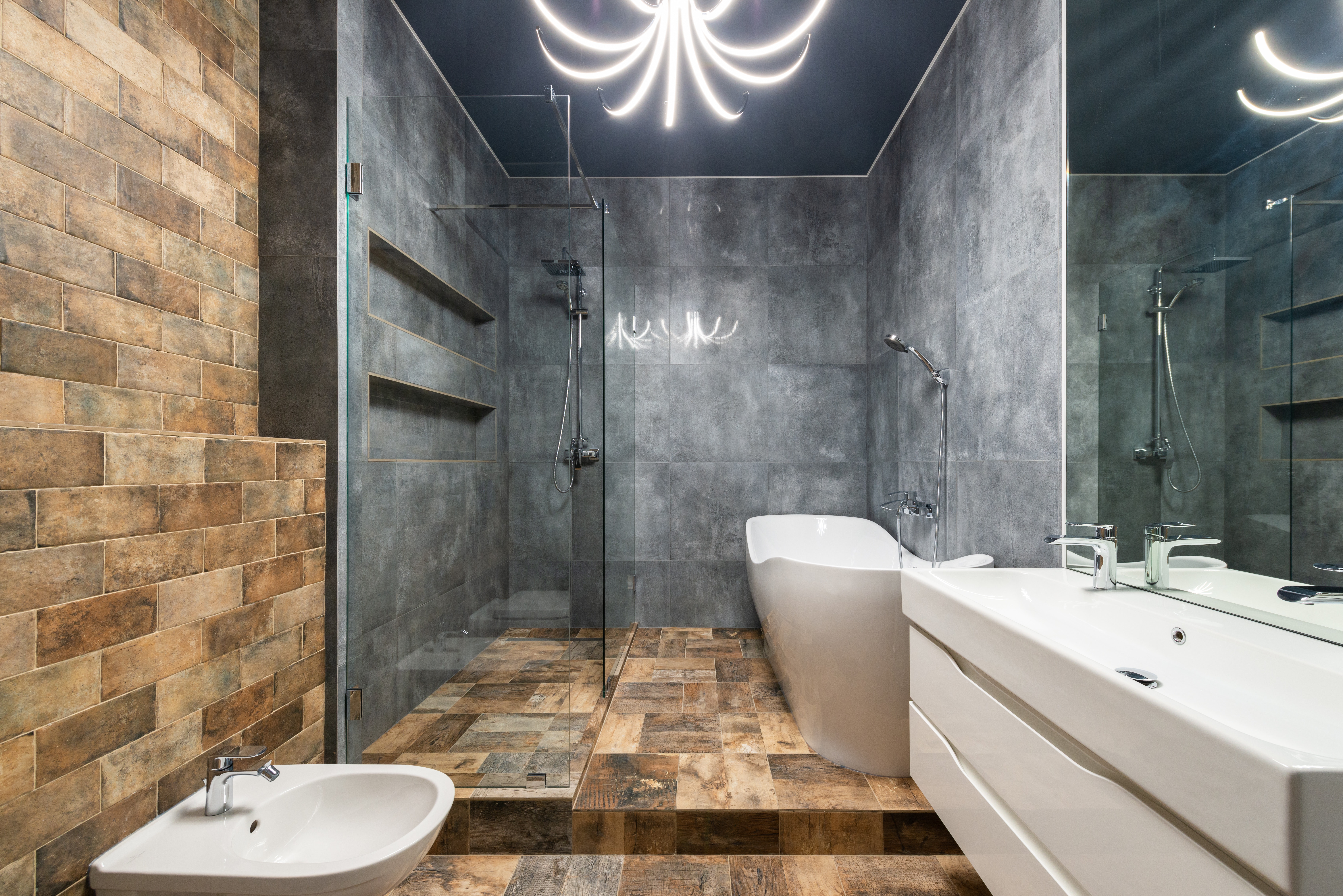
Finishing the bathroom with decorative plaster: process features
Before talking about how to apply a decorative coating, you need to understand that the bathroom is a special area that needs protection from mold and fungus. Therefore, it will not be superfluous to use antifungal agents that will prevent their appearance after contact with moisture.
Several layers of a sanitizing agent will not be superfluous, which will allow you to quickly level the surface, act as a waterproofing. It is also aimed at regulating and supporting the microclimate, blocking the penetration of salts into the texture of the wall.
The process of finishing walls with plaster consists of the following steps:
1. Cleaning of previous coatings, dust, dirt and debris.
2. Leveling the surface for better application of the material, reducing the consumption of the mixture.
3. Priming to create a durable layer on which the solution will “take”.
4. Application, distribution and drying of the cement mortar.
5. Applying decorative plaster on the prepared wall and creating the desired relief.
After the plaster dries, it is necessary to further process it with varnish or wax. If the coating is applied on a wall that comes into contact with water, we always recommend choosing VARNISH PROTECT 2K two-component polyurethane varnish - matt or glossy to your taste. This will help emphasize the structure, add brightness to the coating, and most importantly, create a protective layer from moisture.
Caring for decorative bathroom plaster
After the decorative coating is applied to the wall, at least one month must pass for it to dry completely and acquire the desired level of stability and adhesion to the original surface. Then it will be possible to operate the premises. Otherwise, decorative plaster may crack and deteriorate quickly.
While the drying period lasts, it is necessary to treat the plaster with care. It is important not to allow large drops of water to fall on its surface. And if this happens, remove them with a soft microfiber cloth or sponge.
Surface treatment is allowed only with a soft sponge. If the piece is dirty, you can use detergents without aggressive bleaches and abrasives. It is unacceptable to use hard washcloths, as well as solvents that can damage the wall and lead to the formation of chips and cracks.
